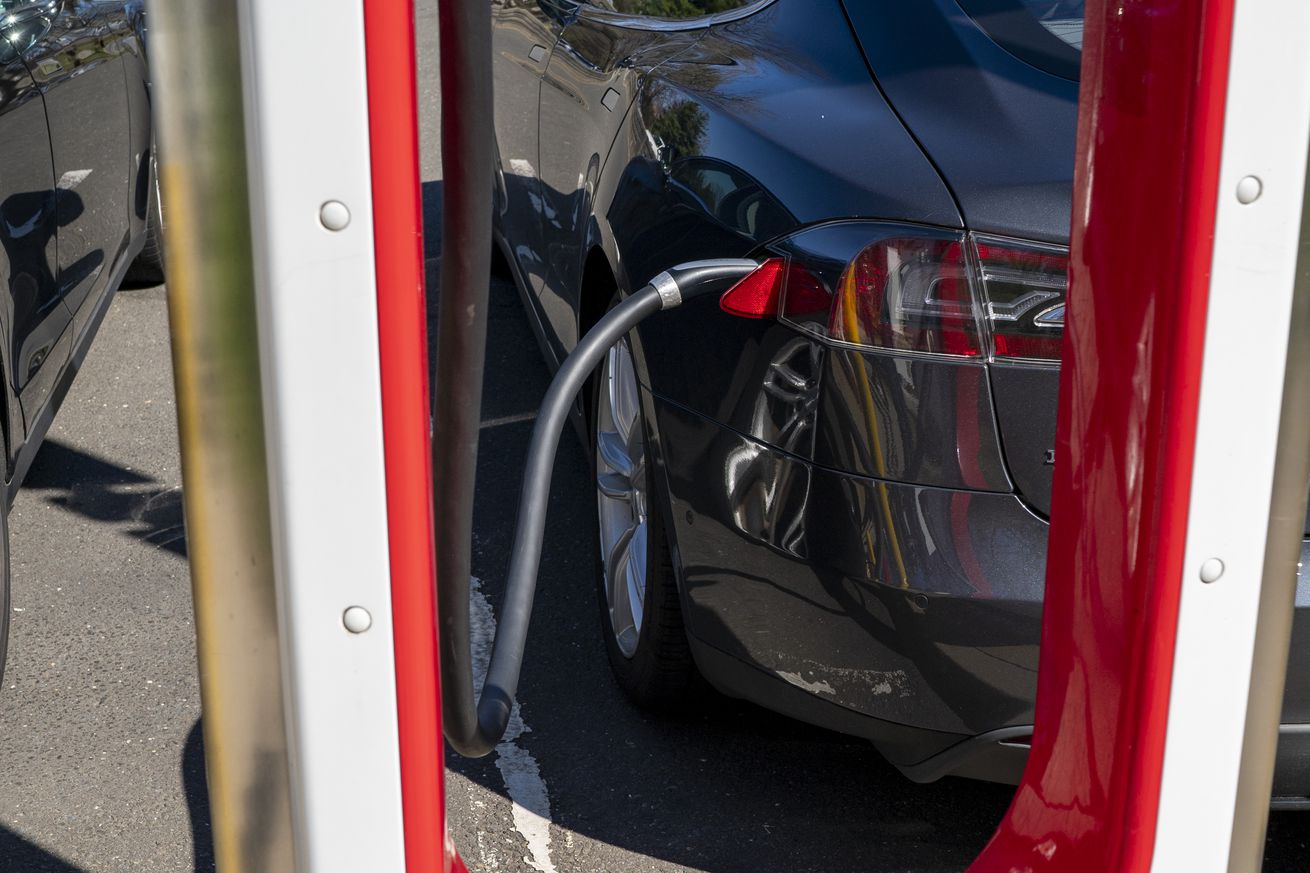
EPA lays out aggressive new tailpipe emission rules aimed at boosting EV sales
The Environmental Protection Agency announced new emissions standards to slash tailpipe pollution, fight climate change, and accelerate the transition to electric vehicles.
The proposal, which was first reported over the weekend and released Wednesday, represents the most aggressive plan to reduce carbon emissions by an administration to date. Depending on how the auto industry responds, the EPA projects that the new standards could result in electric vehicles accounting for 67 percent of new light-duty vehicle sales and 46 percent of new medium-duty vehicle sales by 2032 — a dramatic increase over the current EV sales numbers of around 6 percent.
The Biden administration is portraying the proposal as a critical effort to reverse the worst effects of climate change, while also improving people’s health and lowering the daily costs associated with car ownership. The EPA projects the rules applying to 2027–2032 model year vehicles would cut more than 9 billion tons of CO2 emissions through 2055 — equivalent to more than twice last year’s total US CO2 emissions.
Under the proposal, automakers would need to produce 60 percent EVs by 2030 and 67 percent by 2032 to meet the requirements — compared to just 5.8 percent of US vehicles sold in 2022 that were EVs.
The scope of the proposal took some automakers off guard. Previously, President Joe Biden had said he wanted 50 percent of all vehicles sold to be electric by 2030. Now, he is pushing for two-thirds of all vehicles sold — a stance the auto industry says is far from certain.
“A lot has to go right for this massive — and unprecedented — change in our automotive market and industrial base to succeed,” John Bozzella, CEO of the Alliance for Automotive Innovation, which represents several major automakers, told Reuters. Bozzella cites EV charging infrastructure, electrical grid resiliency, and supply chain constraints as some of the challenges ahead.
The proposal represents the most aggressive plan to reduce carbon emissions by an administration to date
The administration will need to move fast to finalize the rules in order to make it more difficult for a future Congress or president to reverse them. Environmentalists and industry officials predict the new standards will go into effect in early 2024.
The political jockeying over emissions rules has been intense over the past several administrations. After he was elected in 2016, Donald Trump rolled back emissions standards put in place by Barack Obama, making it easier for automakers to produce polluting cars. But Biden reversed the rollback soon after coming into office.
Today’s proposal goes well beyond what Obama put in place and represents the strongest effort by regulators to boost EV sales while effectively phasing out internal combustion engines. Environmentalists praised the move as a positive step toward decarbonizing the transportation sector, which accounts for over a quarter of all global emissions.
“These EPA standards are a key piece of the puzzle to curb our country’s single largest source of carbon pollution and provide cleaner air and a safer climate for all,” said Manish Bapna, president and CEO of the Natural Resources Defense Council, in a statement. “Done right, these will put the U.S. on the road to end pollution from vehicle tailpipes – while also slashing our dependence on oil, creating good domestic jobs, and saving consumers money on fuel.”
“These EPA standards are a key piece of the puzzle to curb our country’s single largest source of carbon pollution”
Predictably, the oil and gas industry is not happy with the new standards. The EPA proposal “would effectively ban gasoline and diesel vehicles” and “is bad for consumers,” American Fuel & Petrochemical Manufacturers president and CEO Chet Thompson said in a statement. To be sure, the Biden administration is not banning gas-power vehicles but is seeking public comment on whether it should extend the rules through 2035 and on other alternatives.
Some environmental groups would have liked to see the administration go further than it has. “This is Biden’s chance to take the biggest single step of any nation to confront the climate crisis, but the EPA’s proposal stalls out when it comes to new gas-guzzlers,” said Dan Becker, director of the Center for Biological Diversity’s Safe Climate Transport Campaign, in a statement.
Becker notes that the draft rules fail to account for the millions of gas-powered vehicles on the road today and fall “well short of the 75% pollution cut necessary to protect our planet.”

